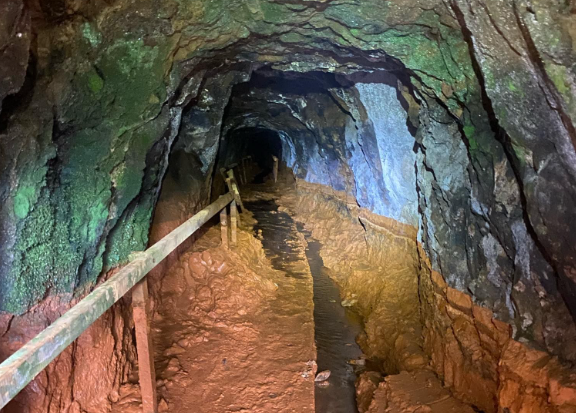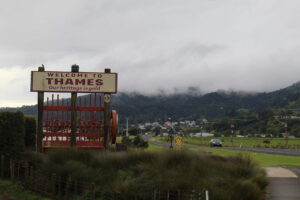A man was seen diving into the bright orange waters of the Ohinemuri River despite warnings to avoid contact with the water as it was likely to be highly acidic and contaminated with arsenic, authorities say.
The river turned bright orange on Friday afternoon after sediment appeared to have been shifted from an old mining asset in the hills above the Karangahake Gorge car park, Waikato Regional Council says.
According to photos on the NZ History Seekers Facebook page, the sediment appeared to be deliberately released from a mine called Comstock, which is more than 120 years old.
“Looking at photos we have received, someone has gone to a lot of effort to open up this mine,” the post said.
“Please stay away from the entrance of this mine due to collapses inside the mine that will be unstable due to the [sheer] amount of sludge that has been released.”
The Department of Conservation has put up signs near the site warning track users of potential contamination.
Council regional compliance manager Patrick Lynch said staff would now complete a thorough scene examination, including how the event occurred and what a “normal” discharge from the mine should look like.
“We really want to understand how this event happened and that investigation will take time,” he said.
Council said staff had taken water samples upstream and downstream, and taken more samples of the settled sediment, with results expected on August 27.

“We only know what could be lingering inside a mine and that could include residual arsenic and heavy metals, so people need to be cautious and not touch any of the orange sediment that still may be lingering in the environment.
“The colour indicates it will be iron-related, but it is likely to be highly acidic so again we advise people to treat it as contaminated and not touch it,” Mr Lynch said.
Substances that may be found in old mine assets could include residual arsenic and heavy metals such as cadmium, chromium and antimony, and they could cause risk, so avoiding skin contact was the main thing, he said.
“We are testing for these heavy metals, and also mercury, both totals and dissolved.”
The flow of water coming from the shaft was running relatively clear by Saturday.
“There is still sediment that has settled in the river in quiet locations or around rocks, but most of it has been flushed through the system,” Mr Lynch said on Monday.
A rain event would wash the contaminant away, he said.
“The more water it’s exposed to, the more diluted it will get.”
However, heavy rain forecast for this week may trigger more flushing of the settled sediment down the stream, into the river, he said.
A plane was being used to see if a sediment plume was apparent in the Firth of Thames, or whether it had dissipated, he said.
Meanwhile, Hauraki District Council asked people not to enter the water.
“Our Paeroa water supply intake is upstream of this so is not affected, however we’ll be monitoring the situation carefully.”
Coromandel Watchdog chair Catherine Delahunty said toxic heavy metals persisted in the environment from the effects of mining.
“The impact on the Ohinemuri river and the species living in [it] will not be good,” she said.
“The Ohinemuri River also runs into the Waihou River and thus into the Hauraki Gulf.
“Dilution does not solve the problem, it merely redistributes it further afield.”




